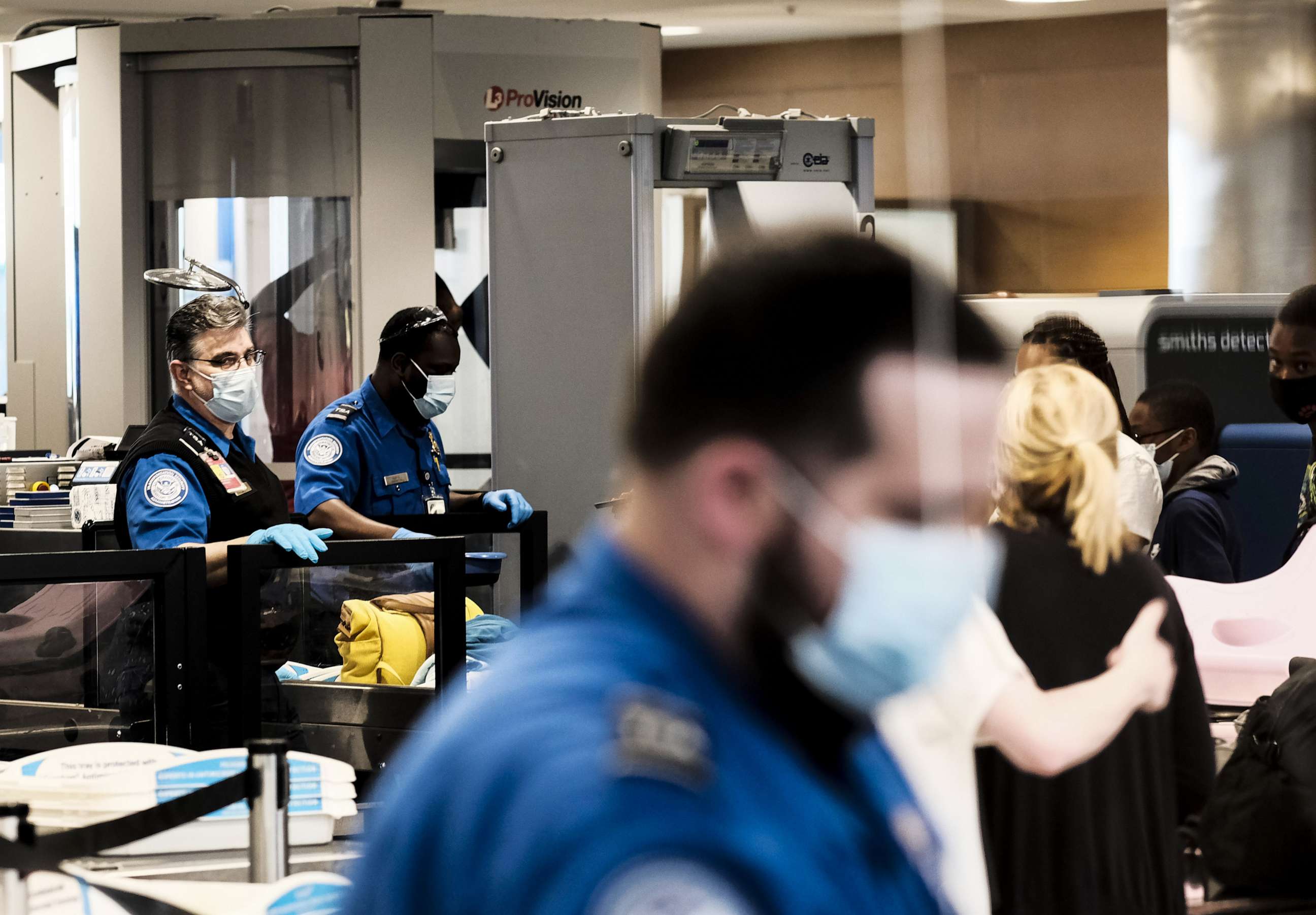TSA recovers record number of firearms at checkpoints in 2022
The Transportation Security Administration confiscated a record number of guns at checkpoints in 2022, most of which were loaded, as the agency has increased the maximum fine for firearm violations.
TSA said it has recovered 6,301 firearms from airport security checkpoints so far this year as of Friday -- more than 88% of which were loaded.
That surpasses the previous record of 5,972 firearms detected in 2021.
TSA said it anticipates it will have intercepted some 6,600 firearms in carry-on bags by the end of 2022, which would be a nearly 10% increase over 2021's record level.
The agency also announced Friday that it has increased the maximum fine for firearm violations to $14,950 "to reduce the threat of firearms at checkpoints." Previously, the maximum fine was $13,910.

"I applaud the work of our Transportation Security Officers who do an excellent job of preventing firearms from getting into the secure area of airports, and onboard aircraft," TSA Administrator David Pekoske said in a statement. "When a passenger brings a firearm to the checkpoint, this consumes significant security resources and poses a potential threat to transportation security, in addition to being very costly for the passenger."
Firearms or ammunition are not allowed in carry-on bags at any TSA security checkpoint, even if a passenger has a concealed weapon permit.
TSA regulations do allow passengers to transport unloaded firearms in checked baggage. Travelers must comply with state possession laws and are required to declare their firearms to airline personnel when checking in, among other requirements.
Firearms detected in carry-on bags are turned over to local law enforcement authorities. Passengers who bring firearms to a checkpoint could face a fine, with repeat violations resulting in higher penalties. Offending travelers may also potentially face arrest by law enforcement depending on state or local law.
The firearms record comes as the TSA is seeing the volume of travelers rebounding to, if not surpassing, pre-COVID-19 pandemic levels.




